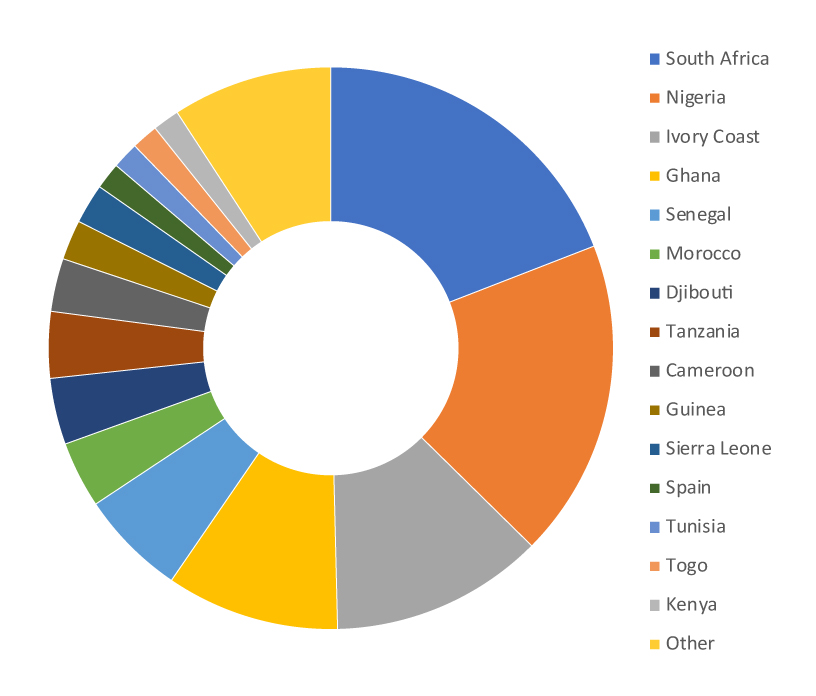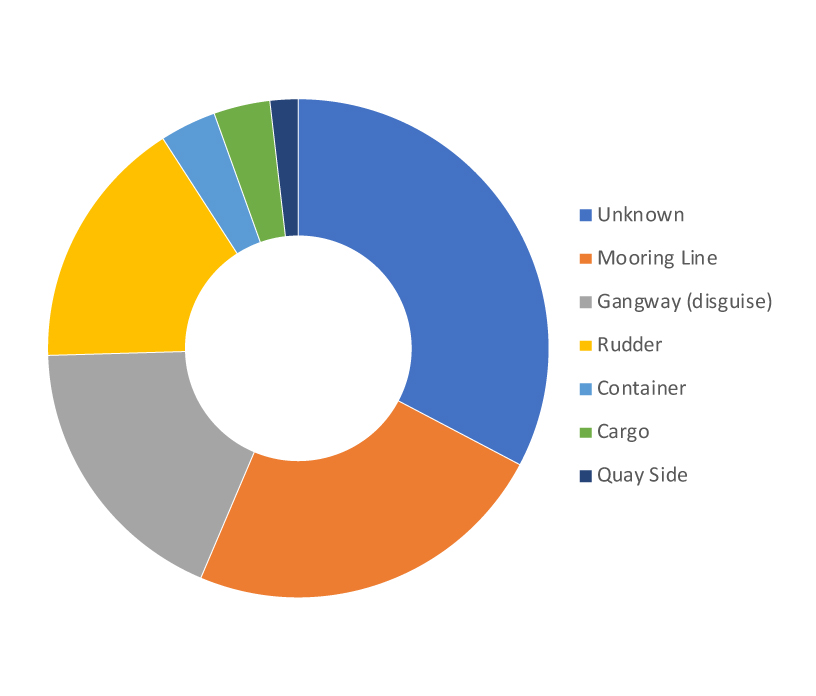
Stowaways
IMO reports a decline in stowaway cases over the last few years. However, whilst the numbers are falling, The Swedish Club notes that the average cost per stowaway claim has moved in the opposite direction.
The presence of a stowaway on board causes a number of problems such as cost of maintenance and repatriation, potential liability for fines and possible danger to the vessel and the crew on board.
Average claim cost and frequency per year
Stowaways are a global concern but are a more frequent problem for vessels trading in areas plagued with economic crisis and political upheaval. The Swedish Club’s statistics show that South Africa and the West African countries continue to be high-risk areas for stowaway embarkations. The administrative hurdles that have to be overcome to get the stowaway off the vessel may be considerable, as some countries in the region do not allow stowaways to be disembarked.
Country of embarkation

Point of access

Detecting a stowaway onboard is a great discomfort for the crew and the situation may lead to financial losses resulting from delays, costs of repatriating the stowaway etc. By considering the preventive measures below the losses can be minimized.
Avoid embarkation of a stowaway:
- Members of the crew, or reliable external guards, should be posted at the gangway and on RORO vessels at each open ramp. Access points to the vessel should generally be kept to a minimum.
- Stevedores and other people who are authorized visitors on the vessel should carry identification cards or tags that they should wear so as to be easily visible. Records should be kept of people boarding and disembarking the vessel.
- Mooring lines, the outboard side of the vessel and containers, whether sealed or empty, are common access points. To eliminate such possibilities, security has to be tightened in the cargo handling routines and the deck area should be patrolled regularly. Make sure that proper deck lighting is maintained during the night.
- The crew should be encouraged to report anything that looks suspicious.
- All doors and entrances to the accommodation, stores and similar should be kept locked in port.
- A search of the vessel including the cargo holds should be made before departure. Stowaways are often unaware of the hazards on board a vessel. They may hide in places which would seem highly unsuitable such as reefer holds, rudder trunks, ventilation fan shafts, funnels and cargo tanks. Such areas should not be overlooked when the vessel is searched.
If a stowaway is detected onboard:
- Search the vessel for more stowaways. If one has been able to sneak on board undetected, others may have been able to do the same.
- Search the stowaway and the surroundings where the stowaway was found for documents or other belongings which could confirm or give a clue as to his/her identity. Documents found should be kept by the master in a safe place.
- The stowaway should be questioned in order to verify his/her identity in preparation for repatriation. A suggested questionnaire can be found using the link below. These details, including particulars of any documents, found that confirm the stowaway’s identity should be forwarded immediately to the owner’s head office and to the ship agent in the next ports of call.
- While the stowaway remains on board, the immigration authorities in all ports of call should be informed of his/her presence and of their status as a stowaway. Failure to inform the authorities properly can result in fines against the vessel.
- The Club advises strongly against signing on the stowaway as a crew member. The vessel may have fines imposed if the authorities discover the true status of the stowaway. By temporarily upgrading a stowaway to a crew member, the ship owner may also assume much wider liabilities in case of injury, illness or death.
- The stowaway must be treated humanely. Adequate living conditions, such as meals, accommodation, medical attention and sanitary facilities, should be provided until the stowaway can be disembarked.
Links
Questionnaire and Case:
Please check the Stowaway questionnaire and the case example below.